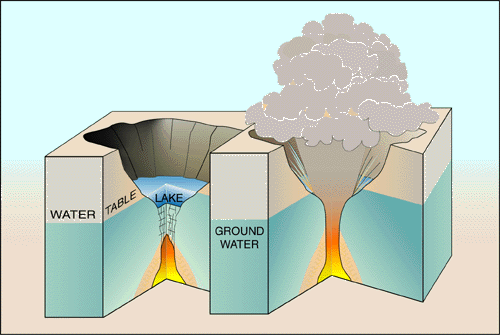Lakes are classified depending on how they formed and on the quality of the water (freshwater or saltwater). Only in the saltiest lakes there is no life. Lakes contain 4 times more freshwater than the rivers, but, if they are not continuously supplied with freshwater, they can disappear through desiccation or accumulation of sediments.
A lake helps in preventing flood by regulating the flow of river. During dry seasons, a lake helps to maintain an even flow of the river. Lakes can also be used for generating hydel power.
#1.Tectonic lakes
source
- The movements of the Earth’s crust formed the largest lake, the Caspian Sea, and the deepest, Lake Baikal.
- Caspian Sea is located in a depression between the Caucasus Mountains and Central Asia and its surface is still varying, millions of years after its emergence.
- Before the formation of the Caucasus chain, it was connected to the Black Sea.
- Wular lake (Jammu & Kashmir) is the largest freshwater lake in India. It was formed by tectonic activity.
The Great Rift Valley in Africa harbors, from north to south, a chain of lakes like Albert, Edward, Tanganyika and Malawi. The rift penetrates to southwestern Asia, comprising the lake located at the lowest altitude: the Dead Sea, 399 m (1,330 ft) under the sea level.
#2. Volcanic lakes
The most common form is the one filling the caldera of a shut-off volcano. One of the largest lakes of this kind is the Crater Lake, from the crater of Mazama Mountain, Oregon, US. It formed 6,600 years ago, having 10 km (6.2 mi) in diameter, and a depth of 589 m (1.963 ft).

source
#3. Oxbow Lake:

source
#4. Glacial Lake

source
A lake formed by melting of glacier is called a glacial lake. Most of the lakes in the Himalayan region are glacial lakes.
#5. Lagoon

When the lake is formed by spits and bars in coastal areas, it is called a lagoon. Chilika lake, Pulicat lake, Kolleru lake, etc. are examples of lagoon.
#6. Artificial Lake


